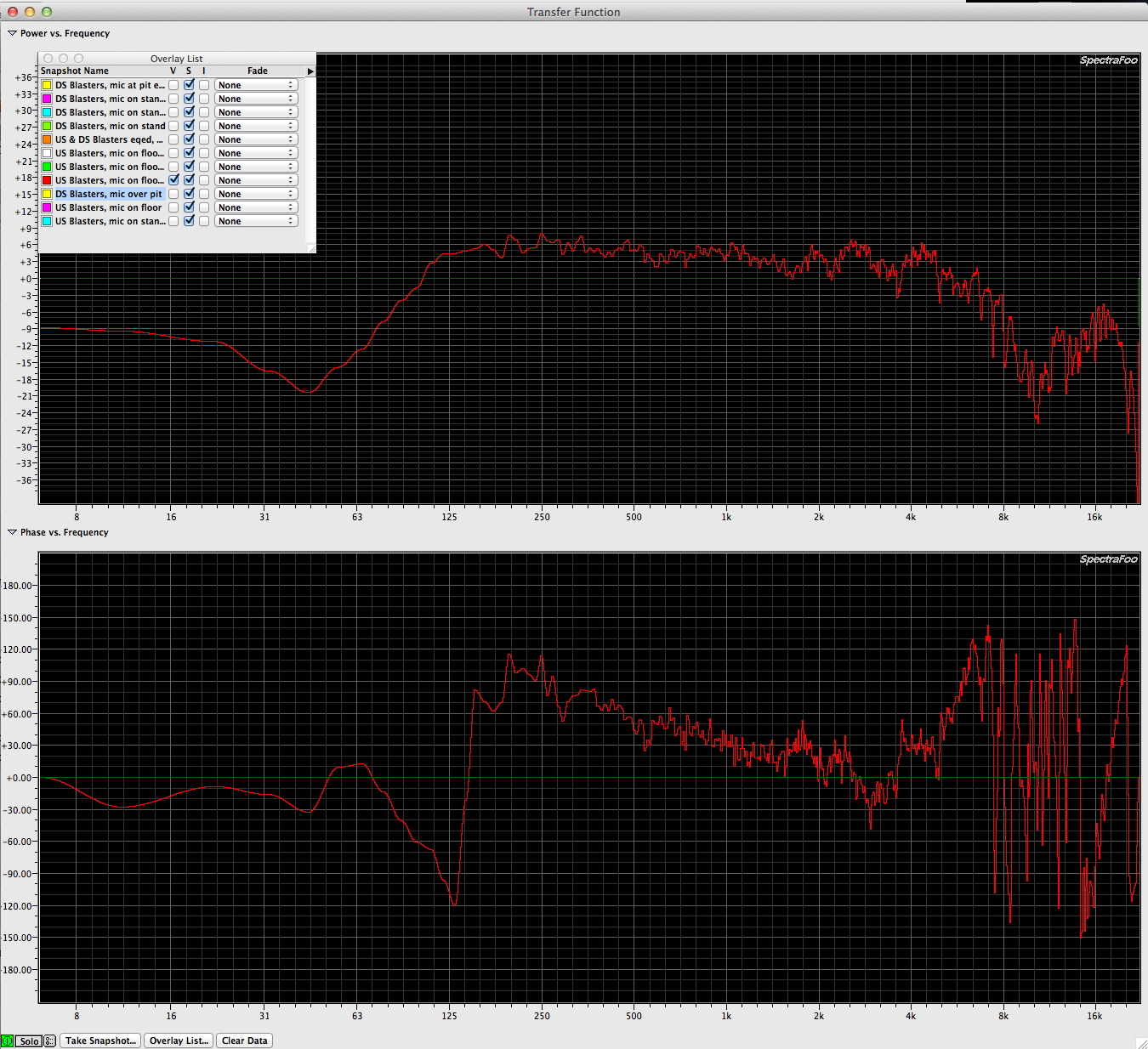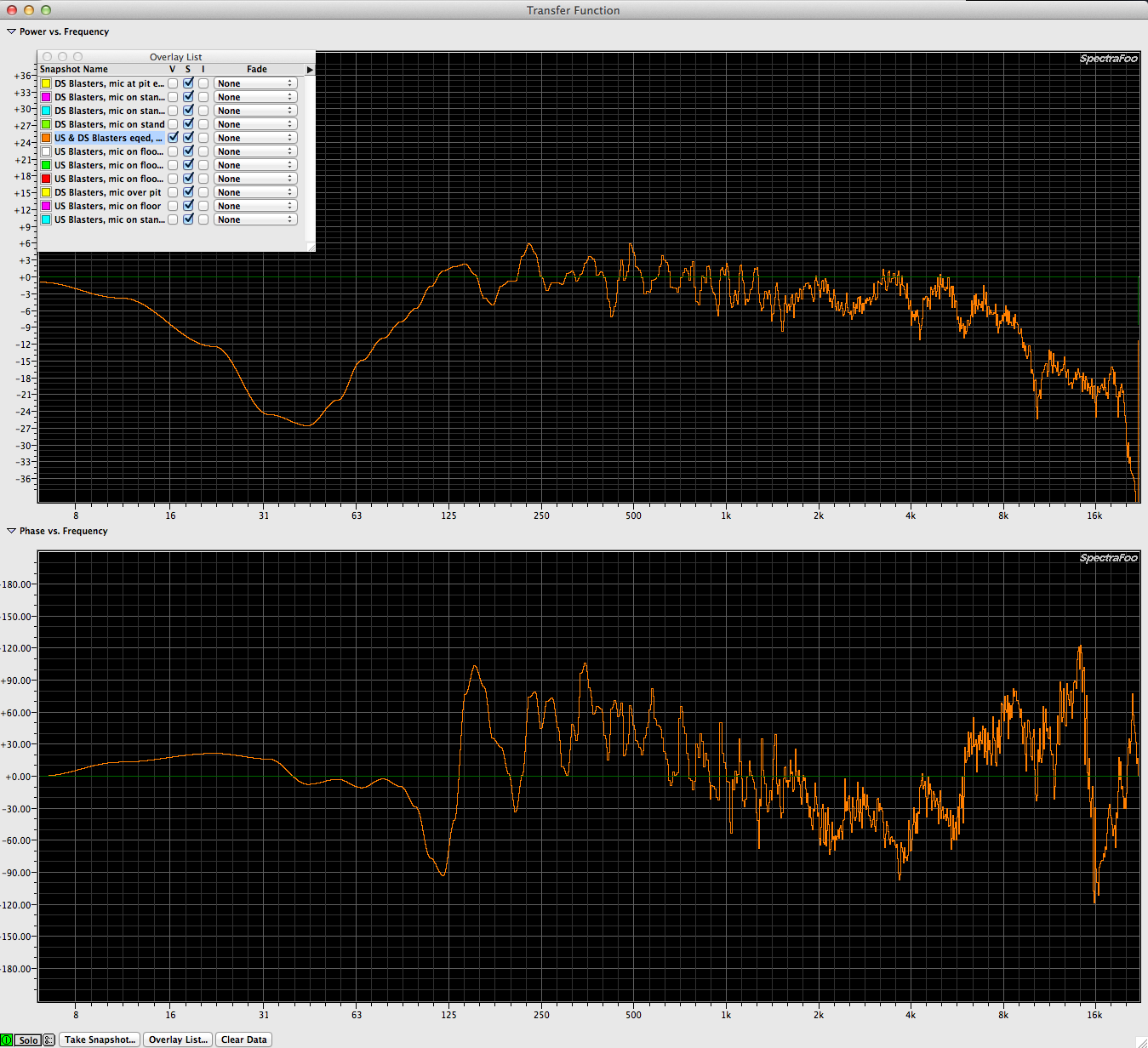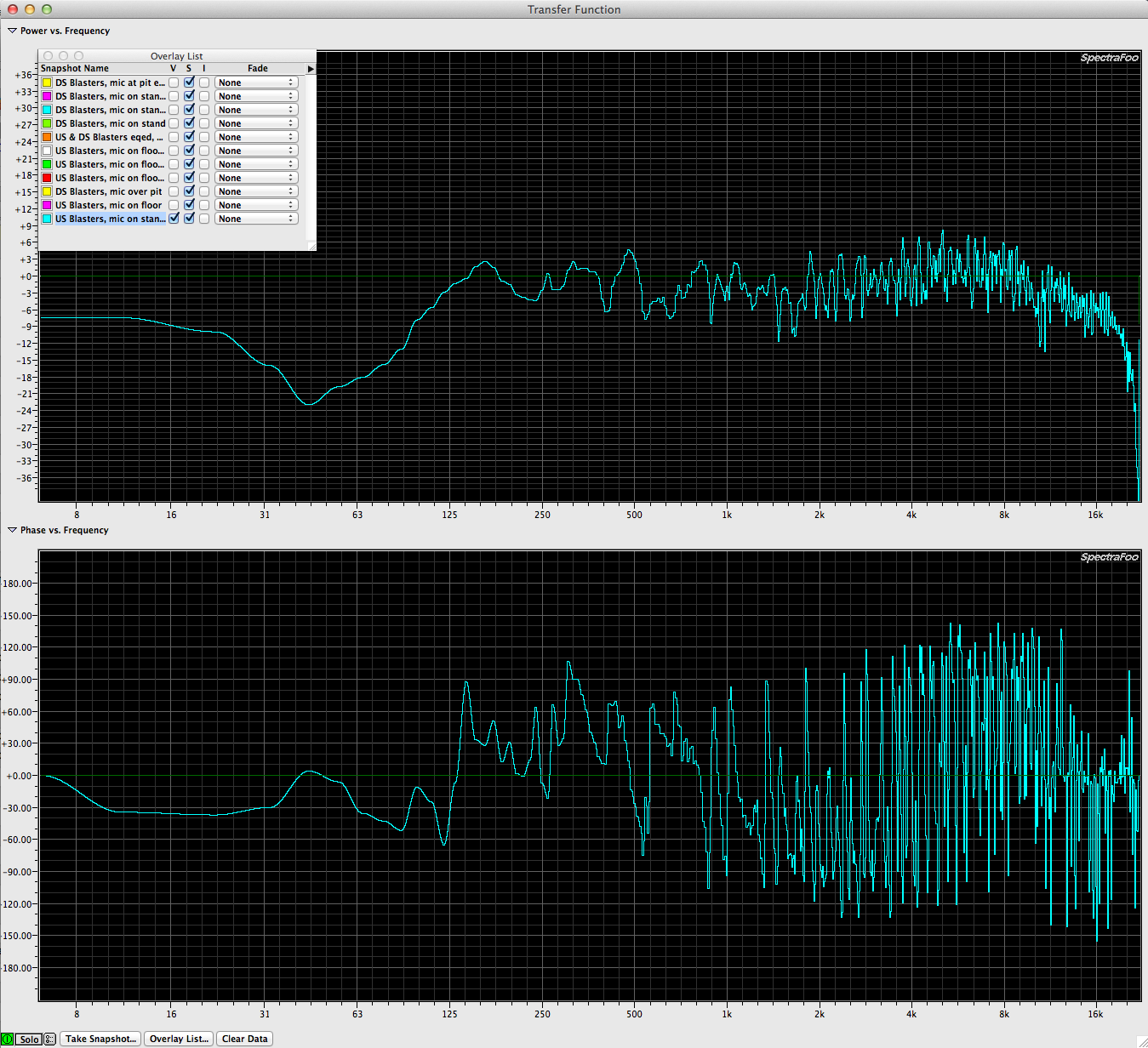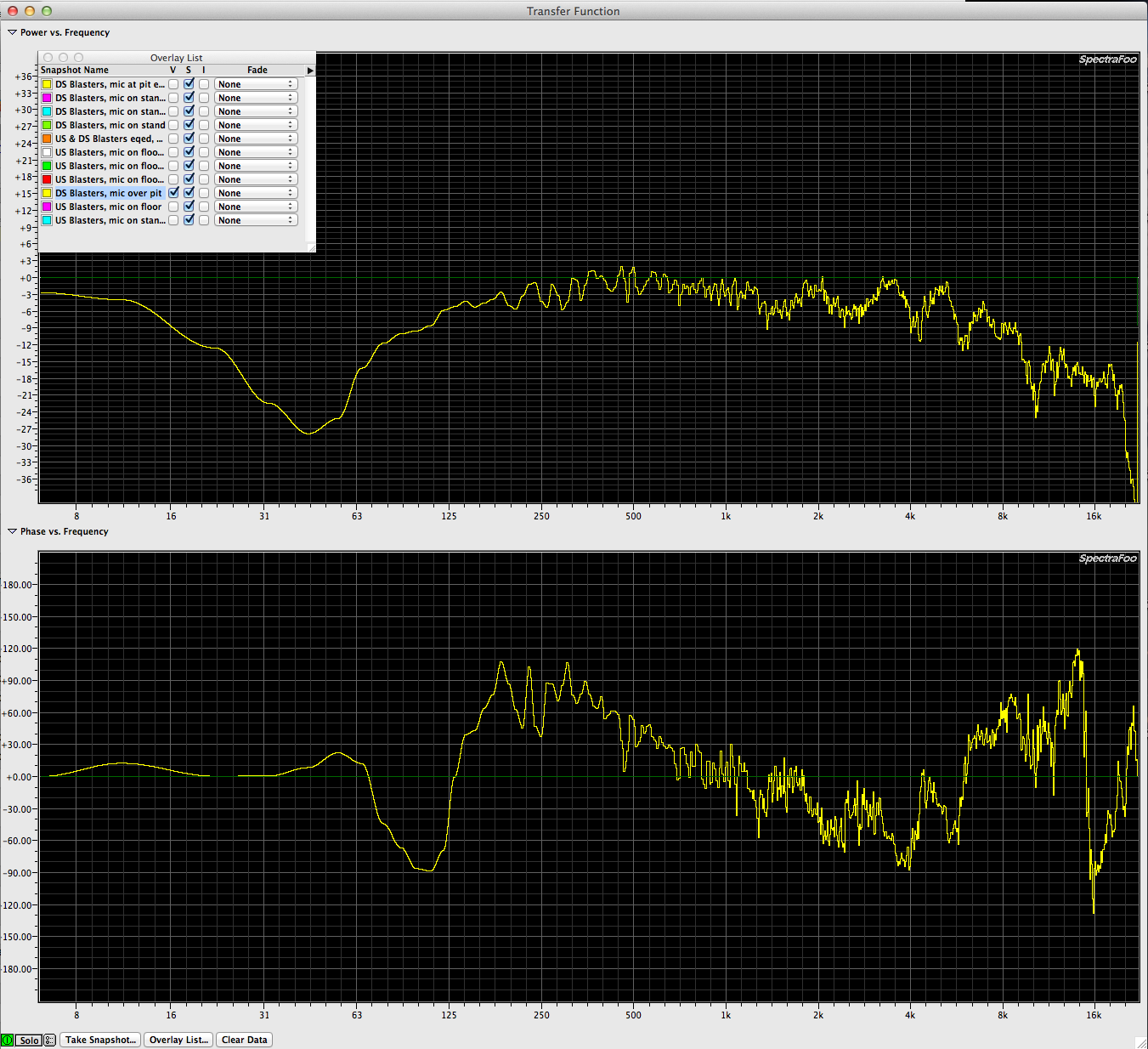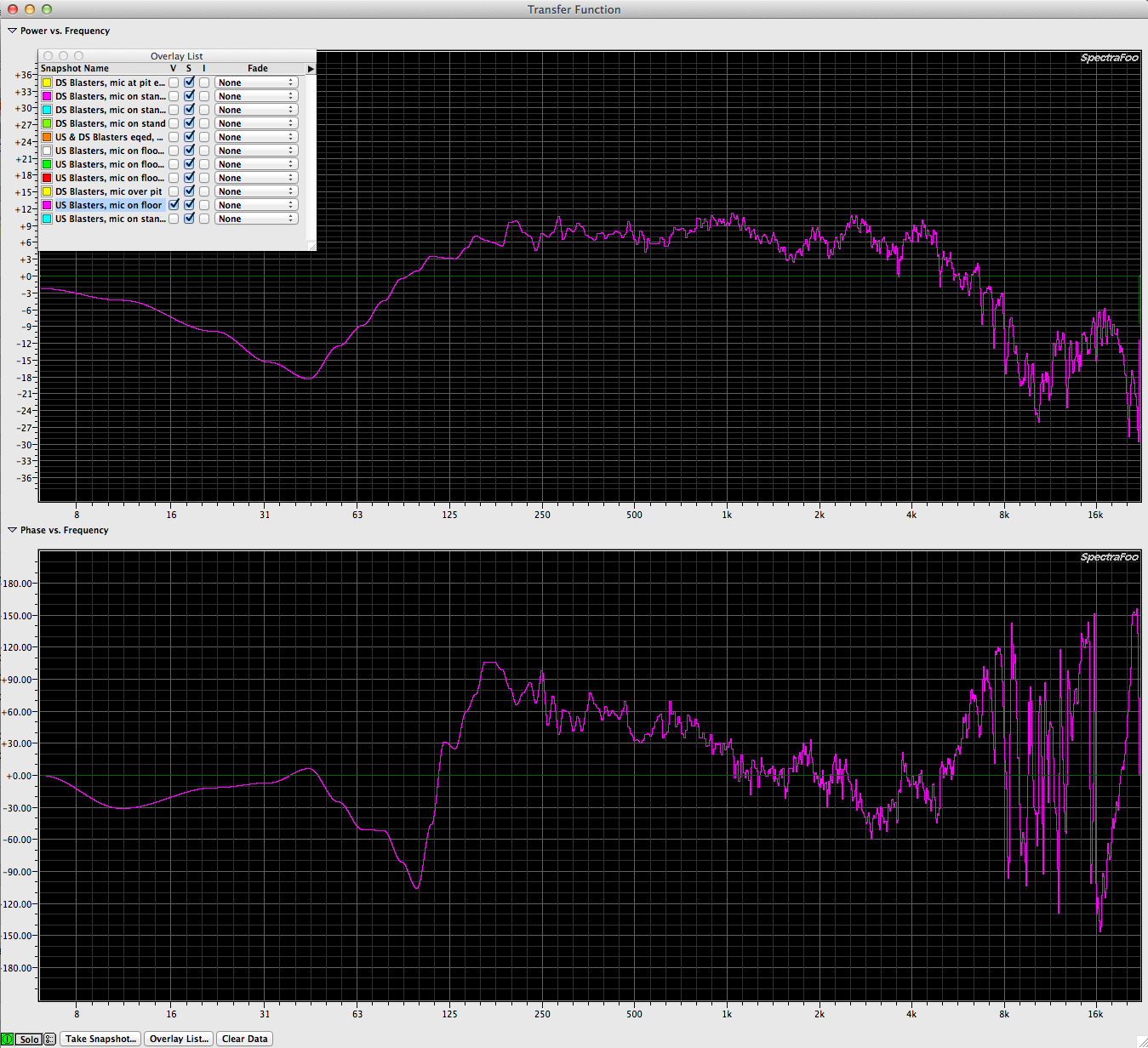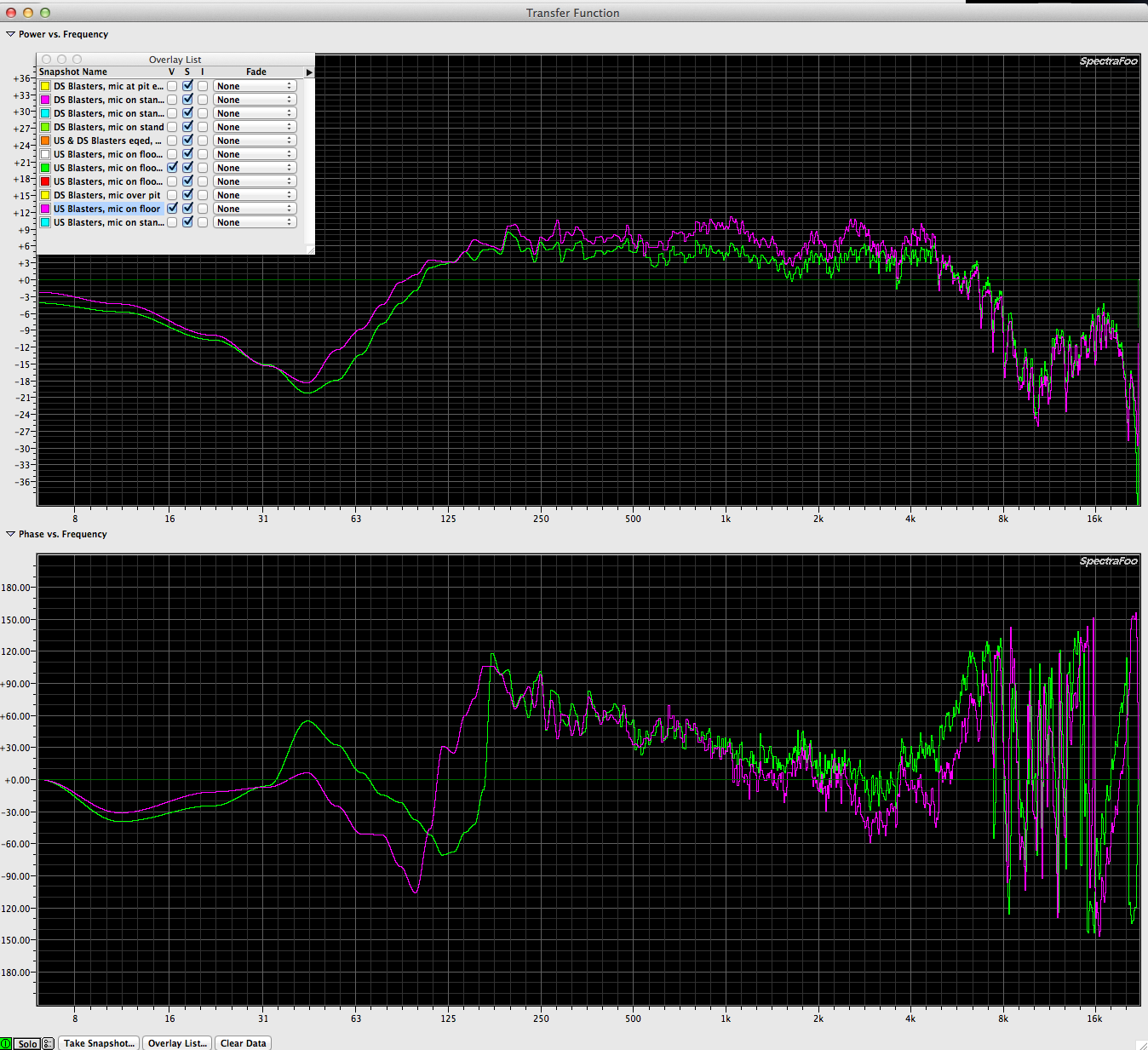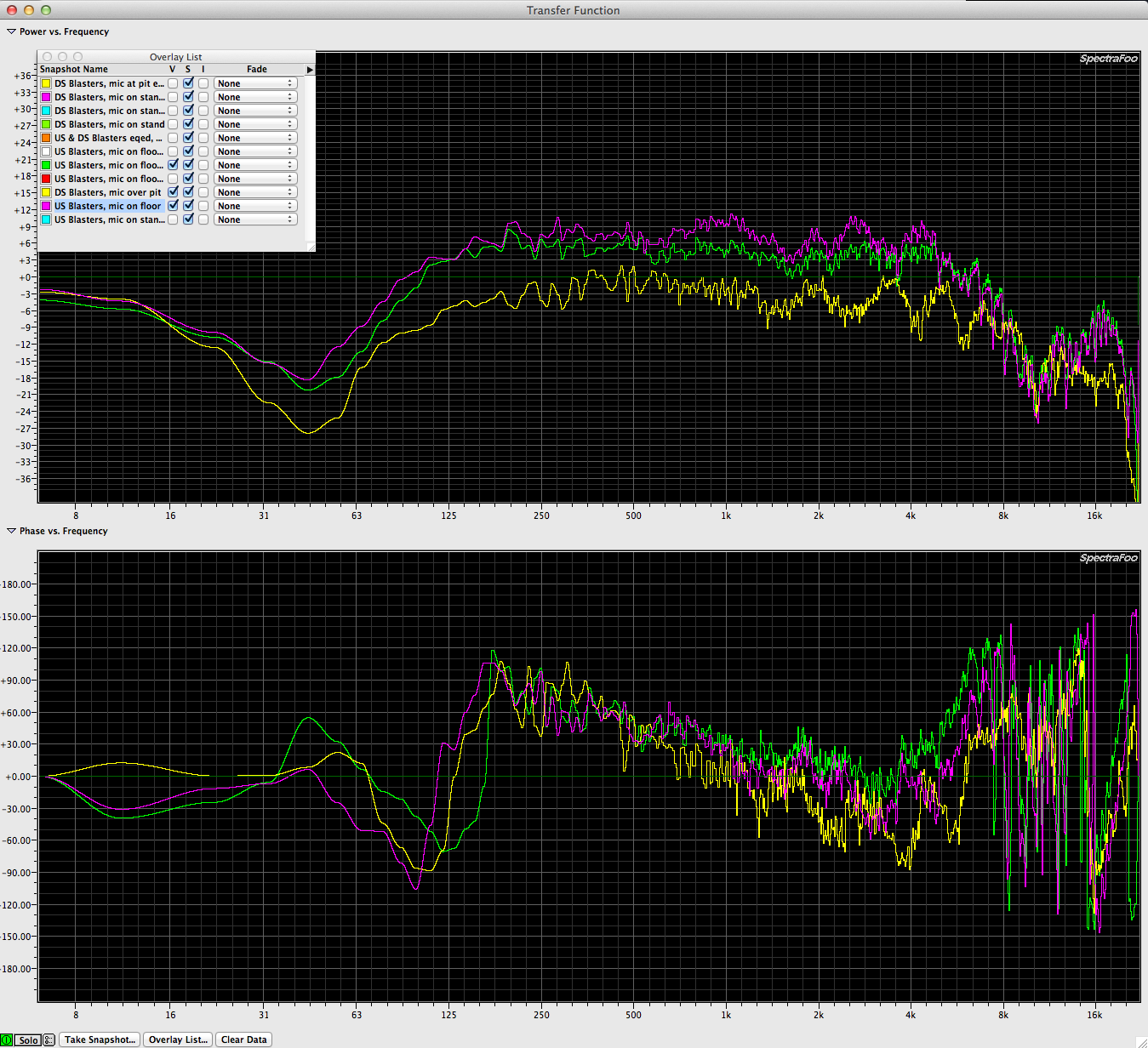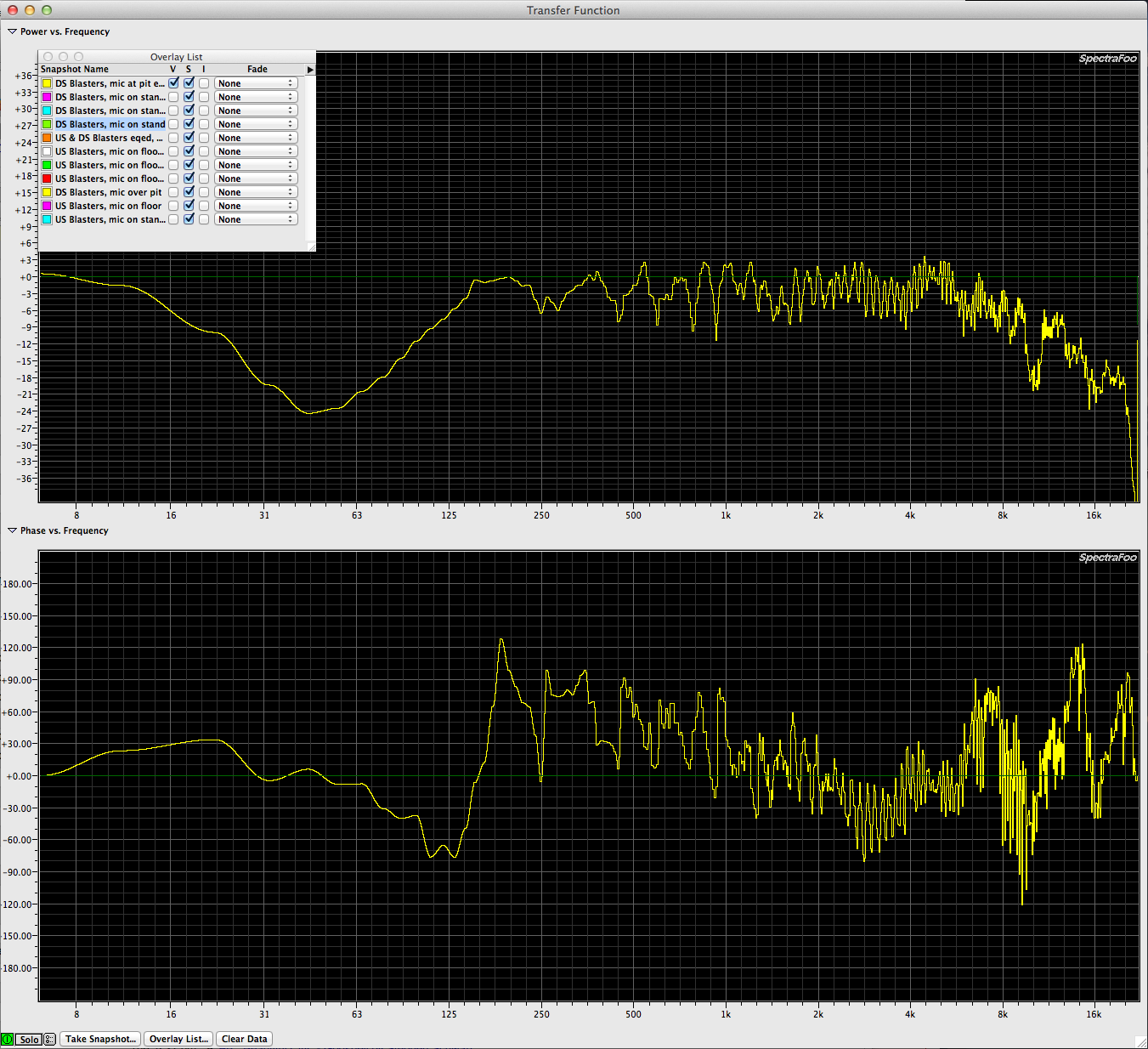When I work with Texas Ballet Theater we use stage monitors flown over the stage on batons. The TOBY speakers were designed specifically to fit perfectly between adjacent batons & are on yokes so they can be aimed downward & across the stage. The idea was to build a monitor that has the same profile as an ETC stage light. The one downside to the Toby “Blaster” is that is mechanically rolls off at around 100hz but since they’re always used in conjunction with a Main PA, this isn’t really a problem.
The stage monitors are flown instead of set on the floor to keep them out of the way & to make sure that dancers don’t stand in front of them blocking them for other dancers.
During a recent Swan Lake production I took some screenshots of my measurement graphs when I was performing corrective processing.
When you begin the measurement process, your first task is to set the delay correctly between the source & response so you’re phase window is presenting useful information. As you capture the delay time between the source & the response, you also get a graph of the theoretical impulse response of the system being measured. Your measurement app inserts a delay on which ever signal needs to be delayed to line the two signals back up.
In this case, there is (1) speaker and one mic.
In this case, there are (2) speakers and one mic. The first transient is closer & louder. Both speakers are reproducing the same sound.
In this case, there are (4) speakers and one mic. The first transient is closer & louder. The other (3) speakers are reproducing the same sound but at a lower volume because they are farther away from the mic. If I went to the trouble to find the exact center of all the speakers, these separate transients would possibly become one. It would be fairly easy to achieve this with (2) speakers just by moving the measurement mic toward & away from one or the other speakers & based on a new impulse response measurement, narrowing the position. With (4) speakers, I’m not sure one would ever get there. This is why it’s important to measure single speakers if at all possible. Whether that means unplugging or muting at the DSP.
For this production there were (4) overhead monitor speakers. A pair downstage & a pair upstage. During the first performance, some of the musicians in the pit commented on hearing the stage monitors & what they described as feedback. I took this information as indication that the stage monitors were:
A. blowing into the pit (a mistake of placement on my part)
B. unbalanced in frequency response (a mistake on my part for not prioritizing tuning them before the first performance)
So what did my measurements reveal?
This is a measurement taking with the mic on a stand in between the downstage pair of speakers. Classic comb filtering & excessive low & high mid content.
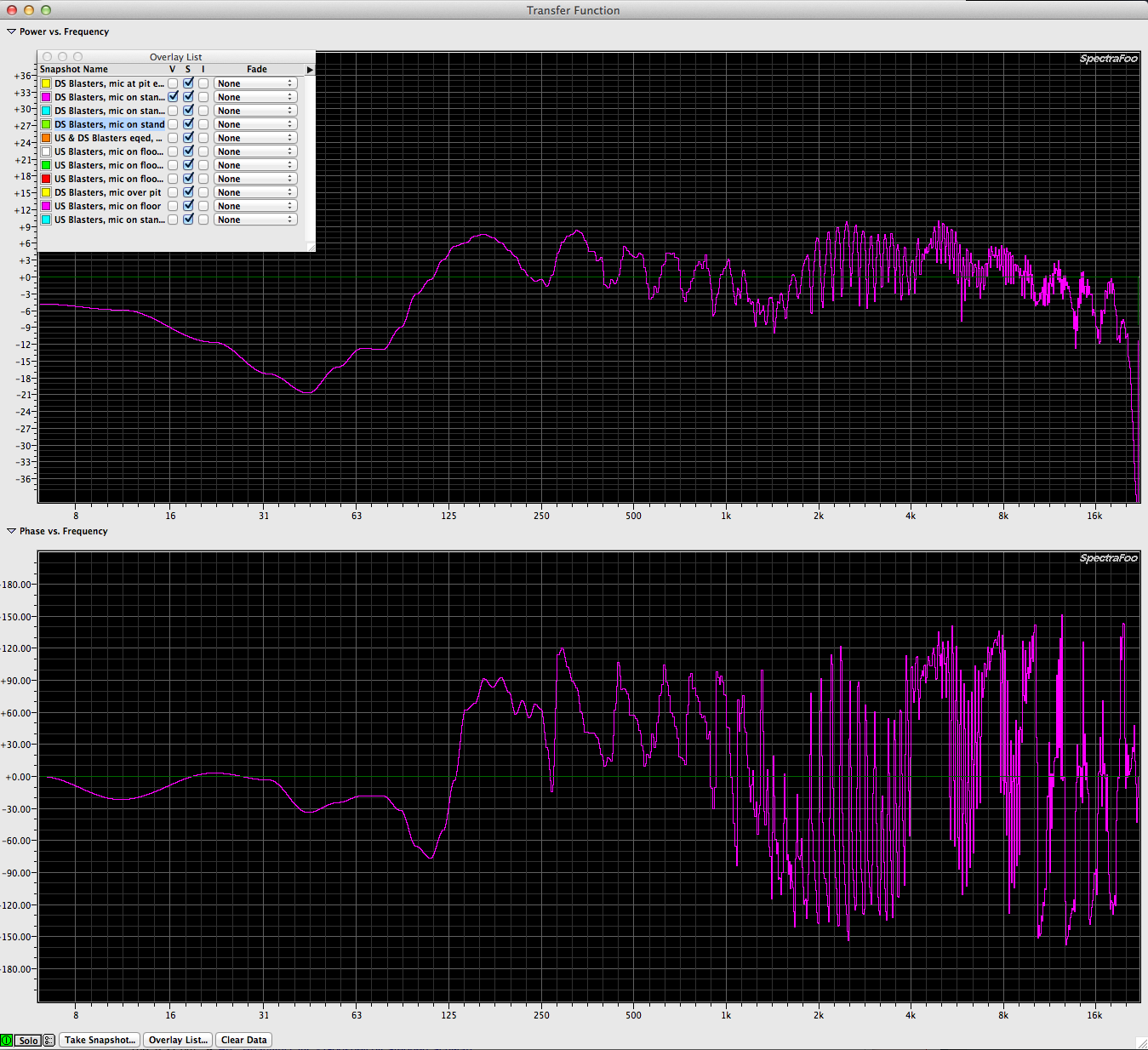
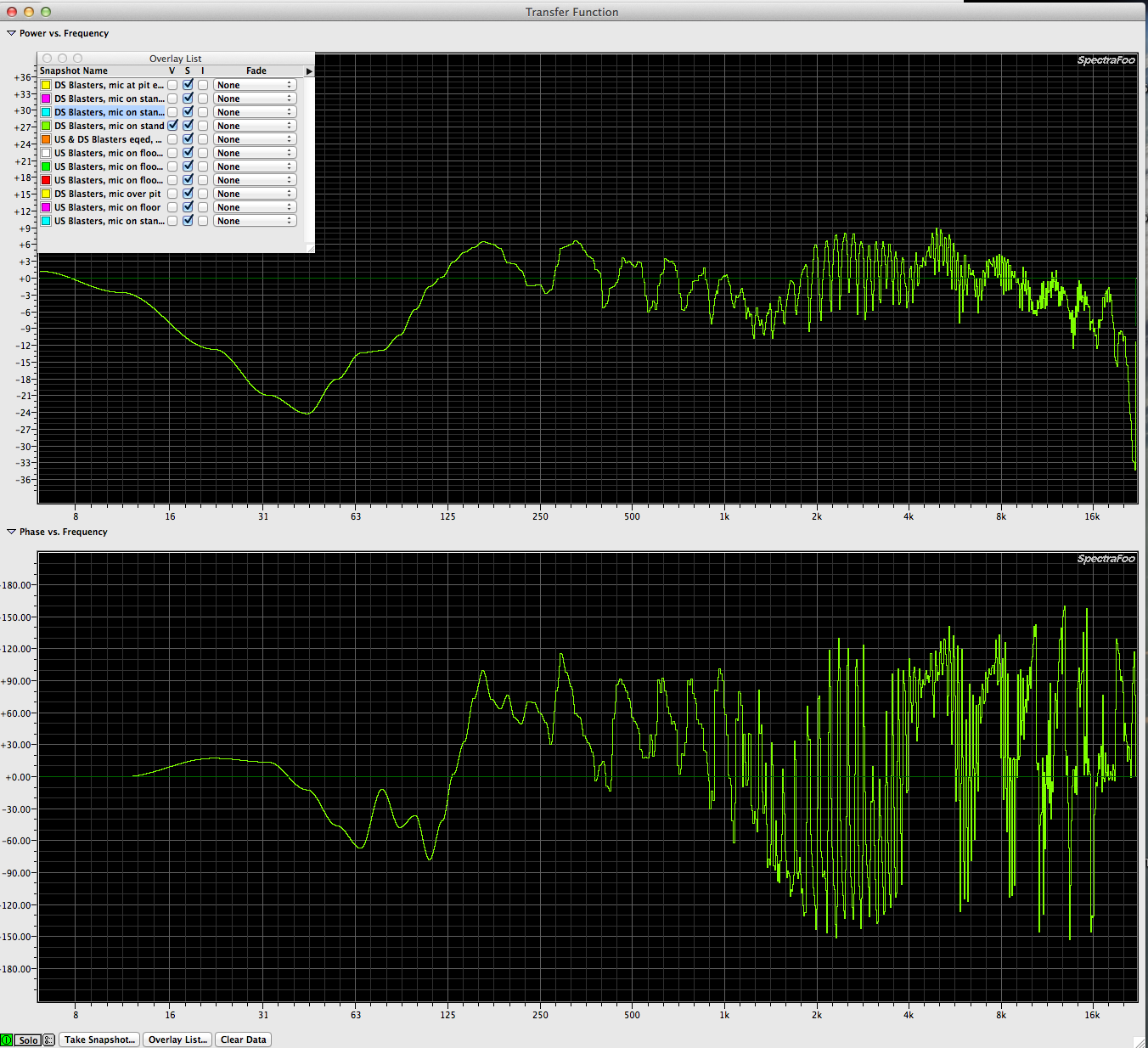
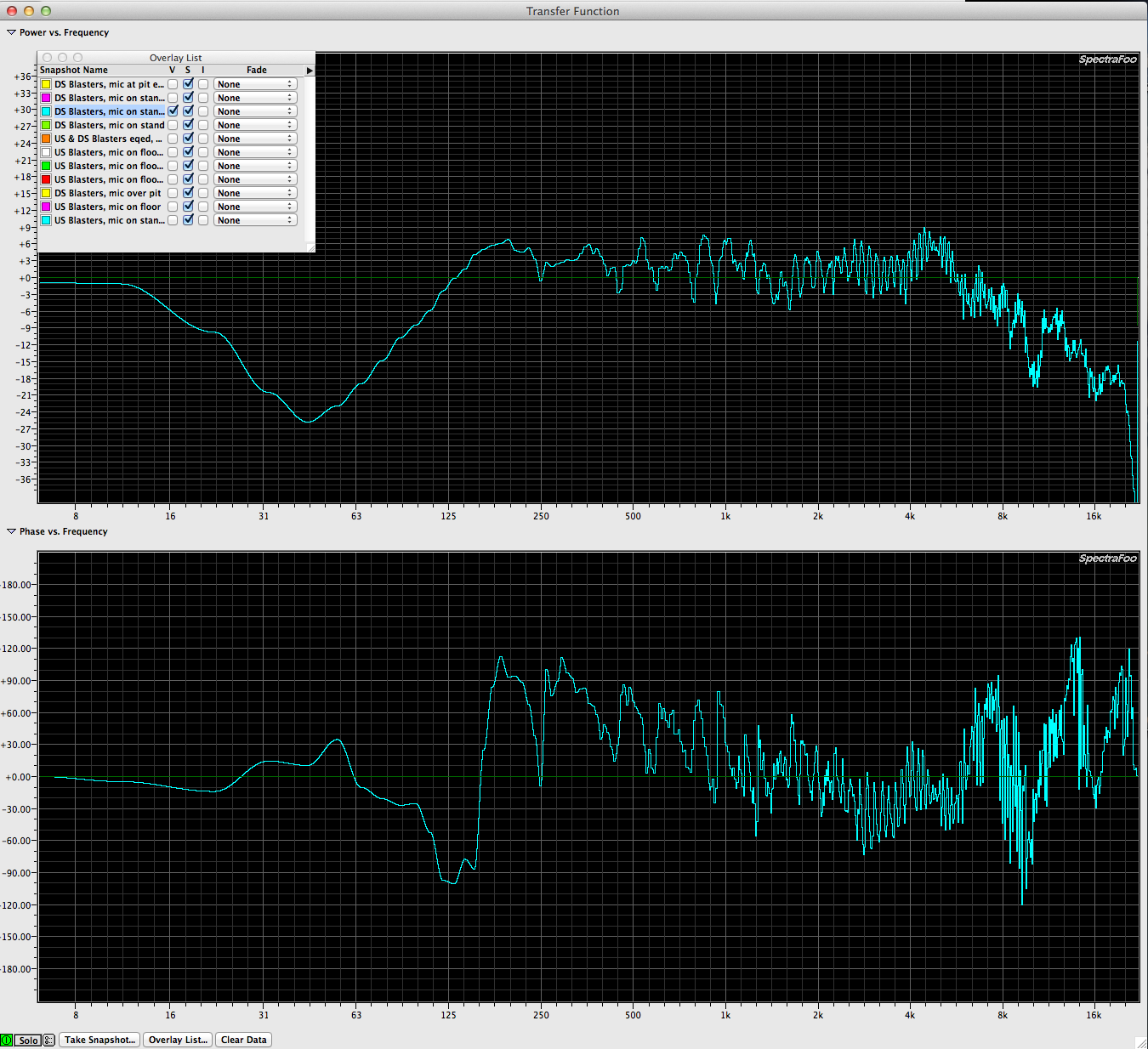
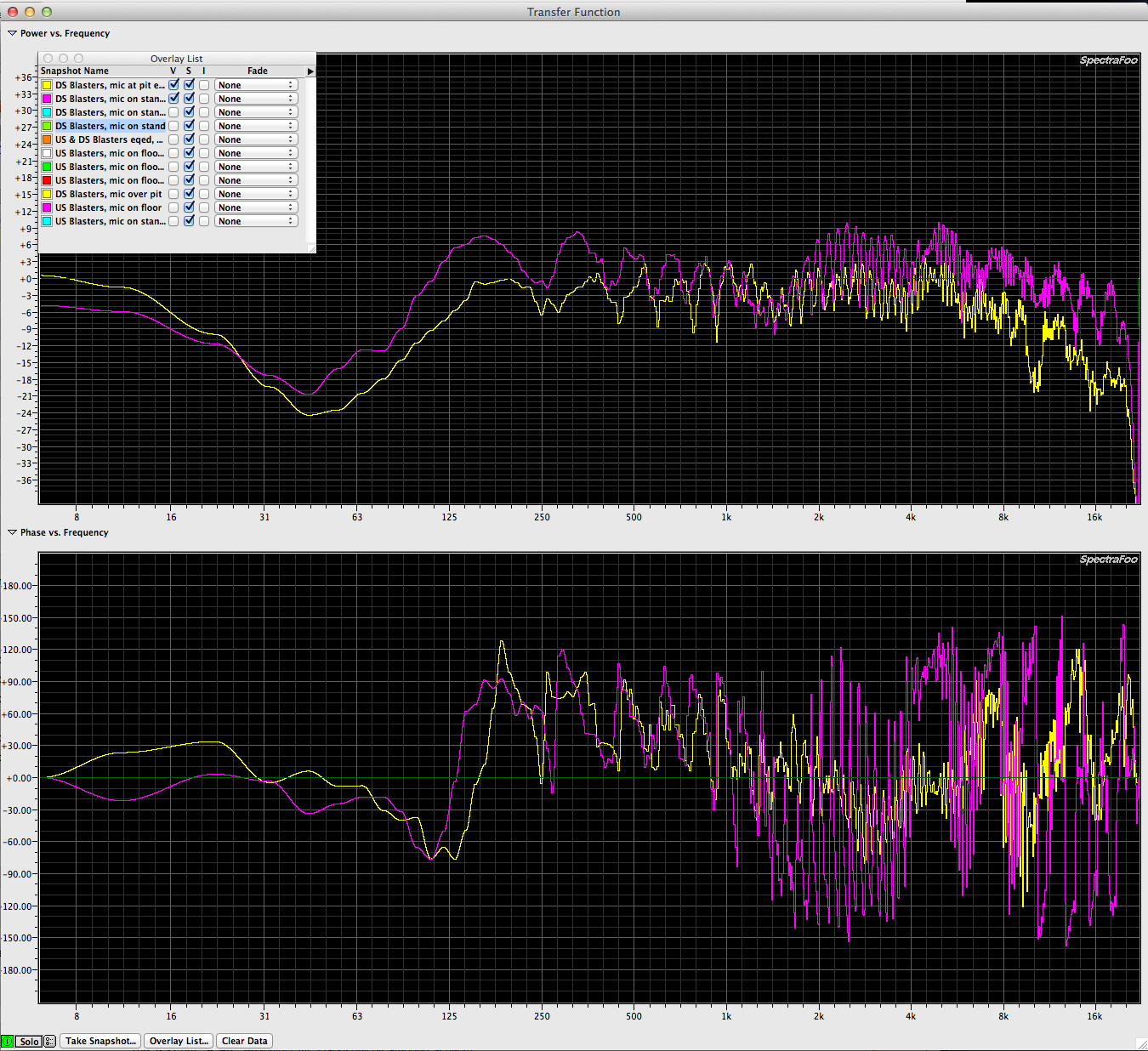
This is a measurement made of the downstage overhead pair after I performed corrective EQ with the mic placed over the pit. It shows that the highs are rolling off but the mid range is still quite present. The comb filtering caused by having (2) speakers cross firing is still visible.










